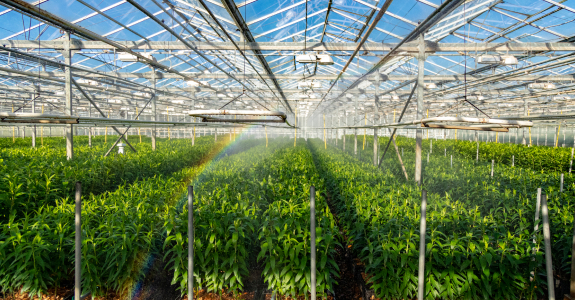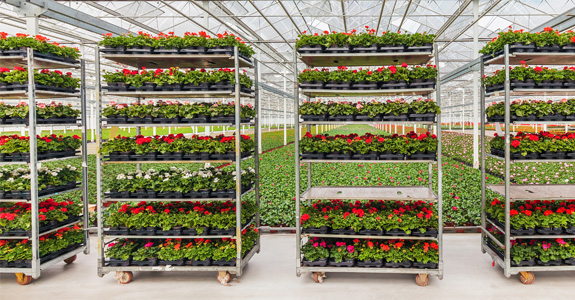How sustainability impacts insurance for greenhouse businesses

From energy-efficient lighting to water recycling systems, growers are adopting eco-friendly greenhouse practices to help reduce costs, meet regulatory expectations, and appeal to environmentally conscious buyers.
This broader move toward greenhouse sustainability is reshaping not only day-to-day operations but also how greenhouse insurance coverage, premiums, and risk profiles are evaluated. Understanding this connection helps you make informed decisions that protect both your crops and your business.
Sustainable greenhouse practices are on the rise
Sustainability is accelerating across the horticultural industry for several reasons, including:
Regulatory pressures and climate-related risk: Government entities are setting stricter environmental standards for water usage, emissions, and waste management. Failure to comply can lead to fines and shutdowns.
Market demands from eco-conscious consumers and retailers: Buyers increasingly want to source from growers who demonstrate environmental stewardship.
Energy cost savings: Upgrades such as efficient LED lighting, geothermal heating, and alternative energy sources reduce long-term expenses.
Positive examples of upgrades: Many greenhouses now invest in solar panels, advanced irrigation, and water recycling systems.
How sustainability affects insurance considerations
Adopting sustainable practices introduces both opportunities and risks. Some examples include:
Positive impacts:
Lower fire risk from upgraded electrical systems
Reduced liability exposure with safer chemical storage and runoff prevention
Improved insurability thanks to proactive compliance and modern infrastructure
Emerging risks:
Higher property values when adding solar panels or advanced irrigation equipment
Potential business interruption if renewable systems fail or need specialized repairs
Cyber exposures as smart greenhouse technologies become more connected
The net effect on your business can depend on how well you align your practices with your insurance strategy.
Insurance coverage for sustainable greenhouse operations
When underwriting policies, insurers carefully evaluate sustainable upgrades, considering not only their presence but also the quality of their installation, maintenance, and documentation.
At the same time, these improvements can raise property values, requiring careful review of policy limits to ensure adequate protection.
Another factor is the use of sustainable building materials, such as insulated panels, recycled construction components, or advanced glazing. While these can improve energy efficiency and lower long-term operating costs, they may also increase upfront replacement values—something insurers consider when setting policy limits.
With these factors in mind, growers are encouraged to work with their insurance provider to ensure their policies align with both the benefits and risks of sustainable operations. Key coverages to review include:
Property and liability insurance for buildings, crops, and third-party risks
Equipment breakdown protection for renewable energy systems and smart irrigation
Business interruption coverage to safeguard against downtime caused by system failures
Cyber liability insurance to address risks from automated greenhouse management
Umbrella policies for extra protection above standard liability limits
And don’t forget to adjust your insurance as your horticultural business changes. For example, it’s always a good idea to review your policy if you add buildings, provide new services, or move locations.
How we support sustainable greenhouse businesses
At Hortica®, we’ve supported the greenhouse industry for more than 135 years. We understand that sustainable practices can reshape your risks—and your insurance considerations. Our experienced specialists can provide tailored coverage to help protect what matters most to your business.
With risk management resources, 24/7 account tools, and dedicated claims handling, we can provide guidance and protection as you integrate sustainable practices into your operations.
Learn more about how our specialized insurance can help your horticultural business. Request a quote or give us a call at 800-541-5082 to speak with one of our representatives.

Greenhouse insurance guide

A guide to controlled environment agriculture—including insurance considerations

Customized horticulture and floriculture business insurance
The information in this article is for informational or entertainment purposes only. View our disclaimer by going to terms and conditions and clicking on Learning Center disclaimer in the table of contents.



